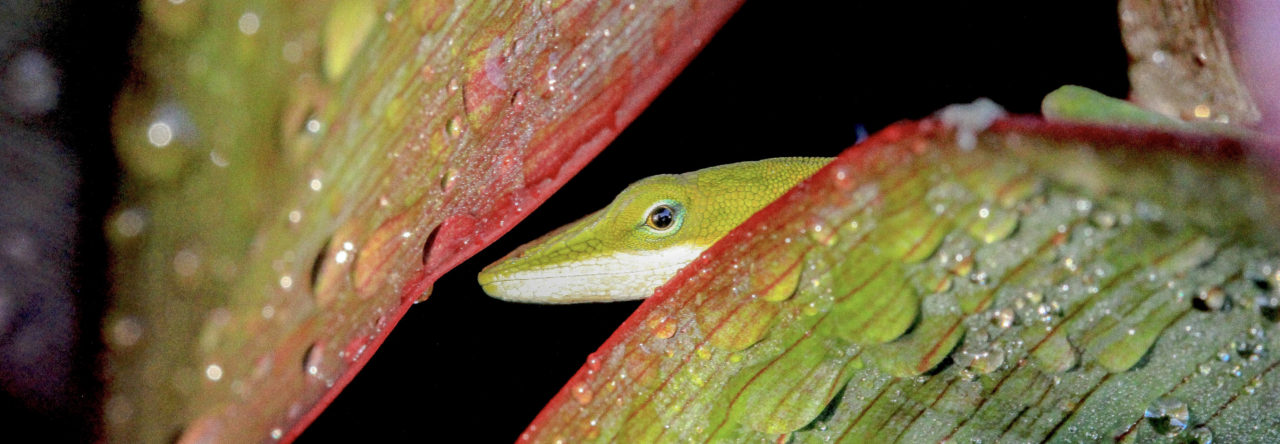
Photograph of a male Anolis sagrei from Christian Cox’s website.
Squamates vary widely in the magnitude and direction of body size dimorphism, which refers to the tendency for the sexes to exhibit different body sizes. Some lineages possess male-baised dimorphism while others have female-baised. The effects of testosterone on mediating sexual size dimorphism in different squamate lineages has long been the study of the Cox lab at the University of Virginia. Christian Cox (of no relation to his advisor) has now reported some exciting steps forward in the search for the mechanisms regulating body size dimorphism in the brown anole, Anolis sagrei. Cox is in the process of carrying out a transcriptome-wide analysis of the genes responsible for sexual dimorphism, with particular focus on examining the genes along the insulin growth factor-growth hormone axis (IGH-GH), which is the same pathway that was reported about yesterday. In his experiment Cox implanted testosterone pellets under the skin of juvenile male and female lizards and then looked for differences in size and gene expression. Increased levels of circulating testosterone prompted increases in body size in both males and females grew to larger sizes, indicating that females have not lost the ability the respond to testosterone. But to better understand the growth axis controlling this difference Cox took a large step forward by also comparing gene expression in the liver of experimental (implant) and control (intact) animals. As the liver is a major regulator of growth via its regulation of the IGH-GH, Cox expected that this tissue would respond to testosterone treatment. This is precisely what Cox found. Specifically, he found a number of genes that are naturally regulated in different ways in males and females and additional genes that responded to the testosterone treatments. To conclude, Cox pointed out that an important next step will be to compare castrated lizards to those intact lizards with the testosterone implant to more clearly elucidate the gene network directly responding to testosterone. But perhaps the most exciting work will come with Cox and his collaborators examining the growth mechanisms of species with male-baised and female-baised patterns of dimorphism to more thoroughly understand how evolution has reshaped these gene regulatory networks during squamate evolution.









 How do lizards move in nature? Note the added emphasis on “in nature.” For many years people have studied the mechanics and patterns of of lizard movement and anoles have played an important role in this research. But today
How do lizards move in nature? Note the added emphasis on “in nature.” For many years people have studied the mechanics and patterns of of lizard movement and anoles have played an important role in this research. But today 

 When I was a kid, the first week of January used to be such a bummer for me because it meant that the holidays were over. But now the first week of each year means that the annual meeting of the Society for Integrative and Comparative Biology (SICB) is underway! The meetings run from January 3rd until January 7th, and there are
When I was a kid, the first week of January used to be such a bummer for me because it meant that the holidays were over. But now the first week of each year means that the annual meeting of the Society for Integrative and Comparative Biology (SICB) is underway! The meetings run from January 3rd until January 7th, and there are